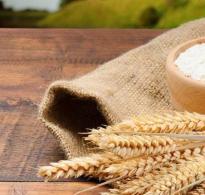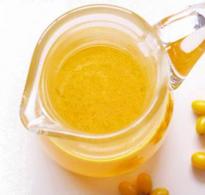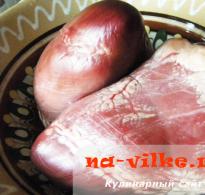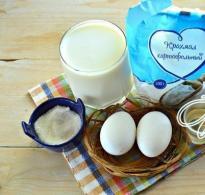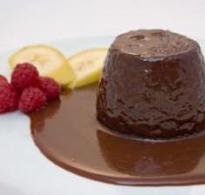How to re-install mash on wheat. Wild Sam - moonshine made with wild grain yeasts
Manufacturing wheat mash They have been doing it in Rus' for a long time, at least 4-5 centuries. Today, wheat is made into bread flour and then into baked goods. It is prepared from its sprouted grains. Feed wheat is used to feed livestock. This cereal grows on absolutely all continents, so it is considered the most popular and widespread. At home, you can make an excellent mash from high-quality wheat grains, which, if desired, can be distilled and obtained.
You can drink the mash immediately after fermentation and straining. Its strength will be about 12-15%. True, there may be problems with storing wheat mash. When warm, it retains its taste properties for no more than 3 days, and it is not always possible to keep the drink in the cold (for example, in a cellar). In addition, not everyone likes the unique taste and smell of a low-alcohol wheat drink. But if you wish, you can get a stronger drink - moonshine, which will be stored much longer. And after double distillation, fusel substances will not be felt in it. It is believed that wheat yeast-free moonshine is easy to drink, has a sweet taste and a characteristic grain aroma.
A little about the components of wheat mash
In recipes for preparing wheat mash yeast is not used. Fermentation will occur due to grain malt - sprouted cereals. The starch contained in the malt will be converted into sugar. And then (during the fermentation process) the sugar is converted into alcohol. But in order to start making mash directly, you will have to puzzle yourself with choosing good-quality grain, soaking it and sprouting it.Wheat for making mash It can be either collected with your own hands or purchased. The average cost of 1 kilogram of peeled wheat grains is about 70-100 rubles. It is important that the cereals for the drink are light and free of foreign chemical odors. If you plan to use a harvest you harvested yourself, it must be given 2 months to age. But old wheat (which has been stored for more than 1 year) should not be used. Before you start soaking, the wheat must be sorted and sifted through a sieve.
It is advisable that water for the production of wheat mash was soft. To do this, ordinary clean tap water is left to settle for a day or two, after which it is drained from the sediment into another container. After this procedure, the hardness of the liquid decreases. But you should not boil the water, as it will deprive it of the oxygen necessary for fermentation.
Sugar in this recipe is necessary to increase the yield of the finished product. Regular granulated sugar, which is available in any grocery store, will do. By the way, theoretically it is possible to make mash without using sugar, but then the quantity of the drink will be less, and its taste will be somewhat harsher, not so pleasant.
Containers for germinating grain and fermenting wort must be thoroughly washed and wiped dry before starting work. Neglect of cleanliness threatens to disrupt the fermentation process and deteriorate the quality of the finished drink.
Recipe for yeast-free wheat mash
Ingredients
- Wheat – 5 kg;
- Water – 38 l;
- Sugar – 5 kg.
Cooking process

The finished drink combines a harmonious natural taste, high quality product and a pleasant aftertaste. The process of creating a fiery grain-based drink usually does not use yeast. Such a simple ingredient is replaced with a pre-prepared substrate called cereal malt. A homemade wheat moonshine recipe requires careful attention to all processes and careful adherence to deadlines.
Overexposure or insufficient exposure can lead to changes in the finishing characteristics. It is also important to prepare high-quality raw materials, so wheat is selected of the highest grade without wormholes and spoilage. Purchased wheat grains must be carefully inspected for defects, since at this stage the foundation of the product is laid.

The main stages of production are:
- selection of grain at a specialized point of sale;
- mash making process;
- direct distillation into raw alcohol;
- final product purification.
There are different ways to make moonshine from wheat at home. Which one to choose is up to the distillers to decide on their own.
VIDEO: How to properly germinate wheat and put in mash
General principles of working with cereals
- The choice of grain - it should be dry, without signs of damage by insects or mold.
- To prepare wheat mash without yeast for moonshine, you can only use those cereals that are aged in a warehouse, and at least two months have passed since the time of grinding.
- Working with cereals begins with sifting and separating from debris and husks.
- Add warm water and pour it in so that it completely covers the grains plus 3-4 cm.
- The container has a wide neck - this makes it easier to control the process and subsequently work with the wort.

- For every 5 kg of grain, 1.5 kg of sugar is consumed, which is poured into the water covering the wheat. After the first “loops” appear (growth begins), add more warm water - 3 liters for every kg of grain and kilogram of sugar. These are the basic proportions.
Wheat mash recipe without yeast
This option is as natural as possible. It is widely used among amateurs and professionals.
During the manufacturing process you will need to perform the following operations:
- For wheat moonshine, sift 5 kg of grain to remove possible debris and husks.
- Fill with clean water at room temperature (cold or hot liquid is strictly not allowed), slightly exceeding the filling level in a wide and flat container.
- Add 1.5 kg of granulated sugar and send to a warm place for germination.
- After sprouts appear from the grains, add 15 liters of water and add 5 kg of sugar so that the wort continues to cook.

- We pour this composition into a container with a water seal and leave it for 10 days, also in a warm place.
- After 10-12 days, the mash will be ready for distillation.
Some moonshiners find it difficult to answer how long the mash ferments on wheat without yeast, which depends on the temperature and quality of the wild yeast. On average, this period does not exceed 2 weeks.
Distilled moonshine from wheat without yeast is purified at home using a convenient method, for example, charcoal.
Grain distillate with added yeast
The first recipe for wheat mash without sprouting in this case will be as follows:
- We select grain in the same way as for the yeast method.
- Grind 4 kg and mix the grind with 1 kg of sugar and 100 g of yeast.

- Pour 3 liters of clean water into the mixture and mix thoroughly.
- We keep the wheat mash for making moonshine in a warm place for exactly a week.
- We decant the liquid and send it for double distillation to Dobrovar.
There is another, simpler recipe for making mash:
- We prepare 2.2 kg of grain, sifting and separating it from possible husks.
- You will need to fill it with water at room temperature, slightly exceeding the fill level.
- Place in a warm place until sprouts appear. Usually it takes 3-4 days.
- Heat 15 liters of water to 45-50°C to dissolve a five-kilogram bag of sugar in the liquid.
- The syrup cools to 35-40°C, then add ingredients such as yeast 100 g. and prepared steamed eggs.
- Mix the mixture well and send it to a warm place for two weeks.
We wrap the mixture in advance and cover it to ensure a constant temperature.
The easiest way to achieve a stable temperature is to use a regular aquarium heater. Set the required interval, connect and lower into the container.
Before preparing moonshine from wheat by distillation, we separate the liquid from the cake.
VIDEO: Recipe for wheat mash with wild yeast
Without sourdough
This grain mash made with wheat without yeast takes exactly the same amount of time to prepare, and the process itself is simpler and more understandable even for beginners.
Ingredients:
- grain – 5 kg;
- granulated sugar - 6.5 kg;
- drinking water – 15 l.
The fundamental difference between this recipe and others is that the entire volume of cereals is used at once.
Preparation:
- Pour wheat into a bucket, add 1.5 kg of sand and fill it with water.
- As soon as the grains “hatch” add the remaining sugar and warm water. Place a water seal or put on a glove to control the process of gas formation.
- After 2 weeks, the glove will fall off, which is a signal for filtering and distillation.

Useful information
Using this method, you can prepare not only moonshine with wheat, but also use other ingredients for this purpose, for example, rye, barley, peas or corn. The result will also be an unusually tasty drink, which is not inferior in strength or organoleptic parameters to its classic counterparts.

The process should involve not fresh, just harvested grain, but one that has been sitting for a couple of months so that excess moisture is removed from it. You need to choose a light and clean mass.
The purpose of germination is to achieve a maximum of enzyme components in the prepared material. During simmering, the enzyme base is strengthened.
Soaked wheat must be monitored carefully and regularly. Otherwise, it can turn sour. This can be prevented by simply stirring the composition periodically so that acid does not form.
Do not throw away the used thick mass. She can serve again. To do this, fill it with water, granulated sugar and add mash. The second batch turns out to be of no less quality than the first.

Stable monitoring of the condition of the product is important. This is done with the help of fire. We bring the lit match to the upper area of the mash. If the released vapors do not extinguish it, but it continues to burn, then this is a sure sign of readiness for distillation.
The raw alcohol obtained as a result of primary condensation must be purified from fusel oils and harmful impurities. 50 gr is enough. charcoal per liter of finished liquid to eliminate the maximum amount of unwanted components.
It must be taken into account that the surface of the grain can be covered with a large number of harmful bacteria. You can get rid of them by disinfection. Before grinding the malt, for malted milk or before drying, you can soak the composition in a weak solution of potassium permanganate for 1-0.5 hours. A 1% solution of sulfuric acid gives a similar result.
Distillation technique
The finished mash is distilled using distillation steam generators. This can be a home-made moonshine still or an industrial design. The volume of the cube is filled to 2/3. This will prevent foam from escaping. It can be heated to the boiling point quite quickly, but at the first signs of boiling, it is important to reduce the heating power to an acceptable level of condensation of alcohol vapor.

When the resulting moonshine from wheat is intended to be used as a finished product, you need to be careful about cutting off unwanted fractions - “heads” and “tails”. The initial heads removed are 3-5% of the estimated volume of alcohol. They are determined in more detail empirically and by smell by rubbing them in the palm of your hand.
The food fraction is selected quite quickly. It is important that splashes of boiling mash do not get into the finished product, as they will cloud the finished product. If the liquid is less than 40% ethanol, then the selection into the food fraction stops, since then there are “tails” containing fusel oils. They do not burn with a lit match, but the mass thus selected is usually used for the next distillation.
You don’t have to cut off the “tails” and “heads” if further rectification is expected. All moving mass is selected.
VIDEO: Wheat-sugar moonshine with wild cereal yeasts
Moonshine made from wheat mash has a more natural taste than that made from any other wort. There are several recipes for wheat mash for moonshine. We will highlight and consider 2 main ones: Braga made with wheat without yeast (aka Braga made with wild wheat yeast) and Braga using yeast. Let's look at the advantages and disadvantages of each method.
- Wheat mash: general information
- Braga on wheat: video
Wheat moonshine is the most popular among other similar drinks. Despite its wonderful taste, the process of preparing it will take very little time. Wheat mash takes no more than 2 weeks to prepare. The technology is simple enough that even a novice moonshiner can handle it.
Wheat mash is made both with and without yeast. Each method has its pros and cons. Braga made with yeast is much faster and takes less effort. Wheat mash without yeast takes longer to prepare, however, moonshine made from it has a more pleasant taste (softer).
We will look at both methods of making mash from wheat. The quality of the wort directly depends on the ingredients: wheat, water, sugar, yeast (in the 2nd method). The water must be clean and settled. Wheat grains should be used only of the highest grade, which have not been previously treated with chemicals.
Wheat mash recipe without yeast
Another name for it is mash made with wild wheat yeast. In the process of preparing it, we will not use purchased yeast, but will limit ourselves to the natural fermentation of grains. To prepare it we will need the ingredients presented below. For convenience, the ratios are based on a standard fermentation tank of 38 liters, which is used in everyday life. You can use any other volume, observing the proportion.
- Water - 35 liters
- Wheat – 10 kg
- Sugar – 10kg
How to make mash from sprouted wheat? Technology:
- Cleaning. Before preparing the wort, it is necessary to prepare the wheat. The grains must be carefully sorted, removing foreign impurities and husks from them. Then we wash the wheat with running water through gauze or a sieve.
- Germination. To get the right mash, you need to germinate the wheat. To do this, pour the grains in a thin layer (no more than 5 cm) onto a baking sheet or other suitable container and fill it with water. The water should completely cover the wheat. To make it easier to drain the water without losing the prepared ingredient, you can use gauze. We cover the bottom of the germination container with it. Cover with a lid and leave at room temperature. In a couple of days, sprouts will appear.
- Preparing sourdough. In the current recipe we are preparing mash from wheat without yeast. We will use wild yeast from wheat itself as a starter. As soon as the sprouts appear, add 2 kg of sugar and mix well. The resulting mixture should not be too thick, otherwise it must be additionally diluted with water. Cover the grain again with a lid and leave for several days. As a rule, the process of preparing sourdough takes no more than a week. Activation of wild yeast can be done in a similar way either on the entire volume of wheat, or using only part of it (say, taking a few kg), but even in this case we should not use all the sugar. Stages 2 and 3 can be combined. Those. sprinkle grains with sugar immediately before germination.
- Fermentation. We move on to the main stage of preparing mash from wheat immediately after receiving the starter. We will need a fermentation container with a water seal. You can use a can or regular large glass jars. It is more convenient to use one large container to immediately pour in all the water, remaining sugar and leaven. It is advisable that the water be slightly warm (about 20 degrees). Do not fill water to the top. After thoroughly mixing all the components, install a water seal and leave the wheat mash in a dark, warm room for a week. Instead of a water seal, you can use a regular rubber glove with holes in the fingers, putting it on the neck of the jar. Inflating the glove symbolizes the beginning of the fermentation process. During the entire fermentation period, you need to periodically shake or stir the wort and remove foam from the surface.
- Sludge drainage. In about a week, the sprouted wheat mash for moonshine will be ready. Fermentation will stop. This can be recognized by the deflation of the glove (cessation of the release of carbon dioxide), the clarification of the top of the wort, and the absence of any activity in the mash. Carefully drain the wheat mash without touching the sediment. Now you can distill moonshine.
Recipe for wheat mash with added yeast
Making mash from wheat with yeast is practically no different from the recipe presented above. It is not necessary to sprout grains and prepare your own sourdough starter. You can simply buy yeast in a store or market, saving a lot of time.
- 8 kg. grains of wheat
- 35 l. water
- 10 kg. Sahara
- 250 g yeast
How to make mash from wheat? Technology:
- Grain preparation. Before preparing the mash, the wheat grains need to be sorted. You can grind them into cereal or even flour.
- Fermentation. Pour wheat into 5 liters. water, add 2 kg of sugar and 150-200 g of yeast. Close the container and leave for 5 days in a dark place.
- Fermentation. After 5 days, add all the remaining ingredients, mix and leave for another week.
- Sludge drainage. After the top of the mash has lightened and the fermentation process has stopped, drain the wheat mash.
Wheat mash for moonshine is ready. As you can see, the recipe for wheat mash is simple. The remaining sediment (wheat) can not be thrown away, but can be reused to prepare a new wheat mash. You just need to add water and sugar to the wort again. It is recommended to distill moonshine from recycled mash twice.
Moonshine made from wheat is in particular demand among connoisseurs of this drink. It has a very mild taste and drinks well at a fairly high strength. It is prepared at home using mash obtained from homemade sprouted wheat.
Technology for producing mash from homemade sprouted wheat
Grain moonshine is of very good quality compared to sugar moonshine. Obtained from a natural fermentation product, it is highly valued among lovers of strong drinks. To obtain a homemade, high-quality, strong product, a preparatory process is carried out - germinating grain wheat.
First, the grains are selected, but fresh ones cannot be used. They should rest for at least 2-3 months after assembly. Wheat grain must be clean, free of foreign matter and well sifted. After this, they are poured into a box (box) more than 0.1 m high. The mass of wheat grains should be about 10 kg. An even layer of wheat should be filled with water, preferably with minimal hardness. It should cover the grains by approximately 3 cm.
Soaking occurs within one day. It is recommended to change the water every 2-3 hours. In winter, you can limit yourself to stirring the mixture the same number of times. Next, the water is drained, and the grain wheat is placed in a similar box, with small diameter holes drilled all over the bottom. This allows the grains to remove excess moisture. Then the wheat is washed one more time and placed to dry.
Read also:
Make sure that the grains remain moist rather than wet at all times. After the soaking process, the water must be drained completely. If grains appear on the fracture after soaking in white liquid, they are rejected. This can happen when they are overexposed during the soaking process.
Sprouting of grain wheat is carried out in boxes with a poured layer of up to 5 cm. It should be mixed three times within 8 hours to remove accumulations of carbon dioxide released. The complete germination time lasts from 4 to 12 days. The drawers can be left open or covered with a damp cloth. Throughout this period, it is necessary to control the moisture content of the grains. If dryness appears, they should be sprayed with water.
As a guide, when spraying, you can adhere to the following proportions: for 5.0 kg of dry wheat grains, about 70 ml of clean water is needed. It is recommended to stir and moisten every 8 hours until germination is complete. The germination temperature should be around +18 C, the humidity level should not be lower than 40%.
Read also:
When wheat sprouts reach a length of about 6 mm and roots up to 14 mm, germination is considered complete. Wheat grains lose their floury taste, crunch when broken and emit a cucumber aroma. At the final stage, the malt is soaked in potassium permanganate (a weak solution) for half an hour. This will destroy all harmful bacteria.
Having chosen a container for the mash, mix the main components: water - 15 l, sprouted wheat - 5.0 kg and regular granulated sugar - 5.0 kg. Infusion lasts for 5-8 days. The degree of readiness of the resulting wort is determined by the water seal (rubber glove). It is recommended to constantly stir the mixture during this period and remove foam from the surface.
Homemade mash recipe from sprouted grain wheat without yeast
This recipe uses wheat malt from sprouted grains instead of yeast. Wheat should be selected that is capable of germinating.
Take 1 kg of wheat, wash it well, and then fill it with water. The water level should be several centimeters above the grain layer. Wheat germination lasts from one to two days. Then granulated sugar is added (within 500 g) and everything is thoroughly mixed. It is advisable to do this gently, adding water if necessary. The resulting mixture is placed in a warm place for ten days to settle. During this period, the malt is prepared.
At the end of this period, the starter is poured into another container, another 3.0 kg of regular sugar is added there, as well as 3.0 kg of wheat grains, all this is filled with warm water and a water seal (rubber glove) is placed. The final fermentation time lasts from 7 to 12 days. After the glove is deflated, the mash is filtered and prepared for further distillation.
Read also:
The stillage wheat remaining at the bottom of the container is used an additional two or three times. To do this, an additional 4.0 kg of regular sugar is added, warm, clean water is poured in and a second batch of mash is obtained. This process can be repeated two more times. The most delicious homemade strong drink is obtained using the second and third mash from the same wheat grains.
Braga from sprouted wheat with yeast
To prepare the mash you will need:
- wheat grains – 5.0 kg,
- yeast – 1.0 kg,
- regular granulated sugar – 12 kg,
- clean water – 40 l.
First, prepare the molds for sprouting grain wheat. Wide pallets are well suited for these purposes. Pour wheat into them in a layer of up to 2 cm. Fill them with clean water so that it slightly covers the layer of grains. Leave for 2 days in a dark place at about +20 C. At the same time, the grain should be carefully mixed twice a day. This must be done to prevent the formation of mold.
After two or maximum three days, sprouts will appear on the grains. Their length can be up to 2 cm, which is an indicator of their readiness. If the grains do not germinate, it means that the raw materials were selected incorrectly or the process technology was not followed.
Water (necessarily warm) is poured into the container for preparing the mash and granulated sugar is added. The mixture must be stirred well to form a syrup. Then, sprouted grain and crumbled yeast are added to the resulting syrup at a temperature of no more than +30 C. All this is placed in a warm place for fermentation. Based on the condition of the water seal, you can determine the readiness of the product.
Our ancestors brewed moonshine from grain ingredients (wheat was more often used), since sugar and yeast were unaffordable for the majority of the population.
Wheat moonshine at home was of excellent quality: strong, practically without fusel odor, transparent and soft. Today, recipes are rarely used without adding sugar, which accelerates fermentation, increasing the yield of moonshine.
The basis of wheat moonshine is sprouted grain - malt, which contains natural enzymes that convert wheat starch into sugar. The yield of pure product with a strength of 38-40° is 900 ml per kilogram of grain.
Raw materials should be taken of the highest quality, food grade, with a high gluten content. The feed product used to feed livestock is not suitable. The yield of moonshine in this case is reduced by 3 times.
It is recommended to prepare a vessel with a wide top and low sides (up to 10-15 cm). The grain must be thoroughly washed, debris and hollow seeds must be separated. Soaking raw materials accelerates their germination and activates biochemical processes.
Sprouting wheat for moonshine:
- spread the wheat layer in a layer of 5-7 cm and fill with water 2 cm above;
- in summer it is recommended to change the water 2 or 3 times a day, and in winter - mix the grain by hand;
- Every day, drain the water, rinse the grain and set it to germinate, covering the top with a wet cloth. You can regularly spray the raw materials with water;
- wheat should be stirred frequently so that it “breathes” air;
- When roots and sprouts 5-7 mm long appear, germination is considered complete.

It is recommended to soak the sprouted grain in a pale pink solution of potassium permanganate for 1.5-2 hours to destroy bacteria and fungi on its surface. Then the raw materials need to be slightly dried and ground in a blender or meat grinder, if green malt is needed within 1-2 days.
For longer storage, the product with sprouts is dried in the oven with the door open. The temperature should be maintained no more than 40° C; with higher heat, the enzymes will die. Continue drying until the grain is completely hard (white malt).
Stages and rules of production
To prepare wheat moonshine, you must follow the technological process:
- Produce enzymes that break down starch into sugar by sprouting wheat for moonshine.
- Make mash on the resulting malt with the addition of wheat raw materials (sugar and yeast are added as desired to speed up the process).
- Distill the workpiece in a moonshine still.
- Clean grain moonshine thoroughly if you need to double distill the raw materials.
- Dilute the alcohol to the required strength and refine the drink.
Adding sugar increases the amount of finished alcohol, accelerates the fermentation process, and softens the taste. The amount of sweet product added to moonshine made from wheat without yeast must be equal in weight to the main raw material.

High-quality wheat moonshine is obtained by using grain that has not been treated with chemicals to protect against insects and resist spoilage, rot, and mold.
How to make wheat moonshine without yeast?
Lovers of organic products prefer to drink real moonshine made from wheat without yeast and sugar, prepared according to old Russian recipes.
To prepare it, you need to convert the starchy contents into sugar using malt enzymes. How to make it correctly wheat malt:
- crushed grain or wheat flour is placed in a container and filled with hot (50-55°C) water taken in a 4:1 ratio;
- the raw materials are thoroughly mixed so that there are no lumps;
- It is better to heat with a steam generator (hot steam) so that the product does not burn;
- It is recommended to heat the mixture gradually, increasing the temperature by 5 degrees and taking a break for 10-15 minutes;
- bring the mixture to a boil and boil the wheat for 1.5-2 hours with slow heating and simmering;
- fully boiled wort should be quickly cooled to 65 degrees;
- add a solution of malt with water, calculating 1 kg of green malt - 5 kg of wheat. If mixed with white malt, it should be taken 20% more;
- the vessel should be insulated, but it is recommended to stir the contents every half hour to speed up the reaction;
- readiness is determined by taste after a two-hour period;
- The mass must be quickly cooled to 28-32 °C and the yeast must be added. You can use dry (3 g per 1 kg of base), pressed (50 g per 3-4 kg), homemade, for example, from hops (0.5 l per 1 kg of wheat);
- The mash container should be filled three-quarters full to provide room for foaming.
The fermentation process lasts from 4-5 days to 2 months, depending on the ambient temperature, the properties of the yeast, and the quality of the raw materials. The amount of alcohol in the mash ranges from 5 to 12%.
Infusion with oak bark, dried fruits, and aromatic plants improves homemade alcohol.
The product is purified by double distillation, using a steamer, and filtering through a carbon filter. You can use activated carbon tablets, the amount of which is 15 g per liter of product (pour the crushed raw material into a jar of ready-made alcohol and strain the liquid after 2-4 days).
Wheat moonshine has a decent strength, a mild pleasant taste, and a bready aroma. By adhering to the technology of preparing alcohol, you can improve the proposed recipes, improving the taste and quality of your homemade strong drink.

